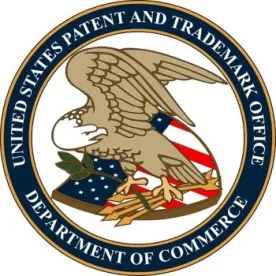On October 12, 2021, the USPTO extended its program for after-final patent prosecution practice, AFCP 2.0, to September 30, 2022. The USPTO initiated the “pilot” program in 2013, to speed up prosecution and to increase contact between Examiners and applicants. Although the USPTO has not issued statistics about the results of the program, applicants still invoke AFCP 2.0 with some frequency. The USPTO has renewed the program each year since inception.
This renewal provides a timely opportunity to discuss briefly what might make participation in the AFCP 2.0 program worthwhile.
AFCP 2.0 Requirements
For an applicant, the two elements of a grantable AFCP 2.0 request are:
-
A narrowing amendment to at least one independent claim; and
-
A stated willingness to participate in an Examiner interview promptly upon the Examiner’s request.
After-final responses not meeting the above two requirements will not receive AFCP 2.0 treatment. Reissue applications and applications undergoing reexamination are not eligible for AFCP 2.0 treatment in any event.
An applicant may believe that allowance is close, and requires only minor amendments to include features that the Examiner should have uncovered (if they existed) when performing a prior art search earlier in prosecution. Prior communications with the Examiner may strengthen the applicant’s belief. In that event, AFCP 2.0 can provide an efficient route to allowance.
A grantable AFCP 2.0 request (which includes the two requirements listed above) gives Examiners more time to act on an applicant’s response after the Examiner has issued a final rejection. When an Examiner receives a proper AFCP 2.0 request, s/he determines whether further search and/or consideration of the applicant’s after-final response is required and, if so, how extensive the search and/or consideration would be. If the Examiner thinks that the time involved would not be excessive, and that a discussion with the applicant could lead to allowance, the Examiner will contact the applicant or the applicant’s representative to schedule an interview.
If the Examiner determines that the time involved would be excessive, handling of the after-final response reverts to the usual after-final process, with the Examiner issuing an advisory action.
If an applicant believes that substantial claim amendments are necessary, AFCP 2.0 likely will not be helpful. Particularly if the claim amendments take the application in a direction the Examiner may not have contemplated in doing the initial prior art search, the Examiner probably will deny the request as requiring too much additional time.
Even if the claim amendments are minor, if the Examiner thinks that the amendments fall outside the scope of the original prior art search, the Examiner could well conclude that the additional time and effort required would exceed the extra time the AFCP 2.0 program affords the Examiner.
There are at least two ways that an applicant and an Examiner will not have a meeting of the minds, leading to the applicant’s failure with AFCP 2.0:
-
The applicant and the Examiner may disagree about the extent of the applicant’s proffered amendments.
-
The Examiner may not have done a sufficient search earlier in prosecution, and now has to make up for that, but does not have the time.
Takeaways
With a reasonably cooperative Examiner and suitable indications of progress toward allowance, AFCP 2.0 can provide a path to allowance through minor amendments to independent claims. Substantial claim amendments, particularly ones that are not telegraphed earlier in prosecution, likely will require a lot of additional search time, and so will not lead to allowance. Success also depends on the quality of the initial prior art search that the Examiner did.




 />i
/>i

